In November, the floodwaters, also known as rising water, gradually recede from the rivers, bringing with them an abundance of shrimp and fish, including the specialty snakehead fish. Fishermen in An Giang province living in upstream areas such as An Phu district, Tan Chau town, and Chau Doc city concentrate on catching shrimp and fish...
This year, the Mekong Delta has experienced a beautiful flood season, with water levels rising high in the fields, resulting in a bountiful harvest of fish and shrimp for the local people. However, amidst the joy lies concern due to the unpredictable water levels...
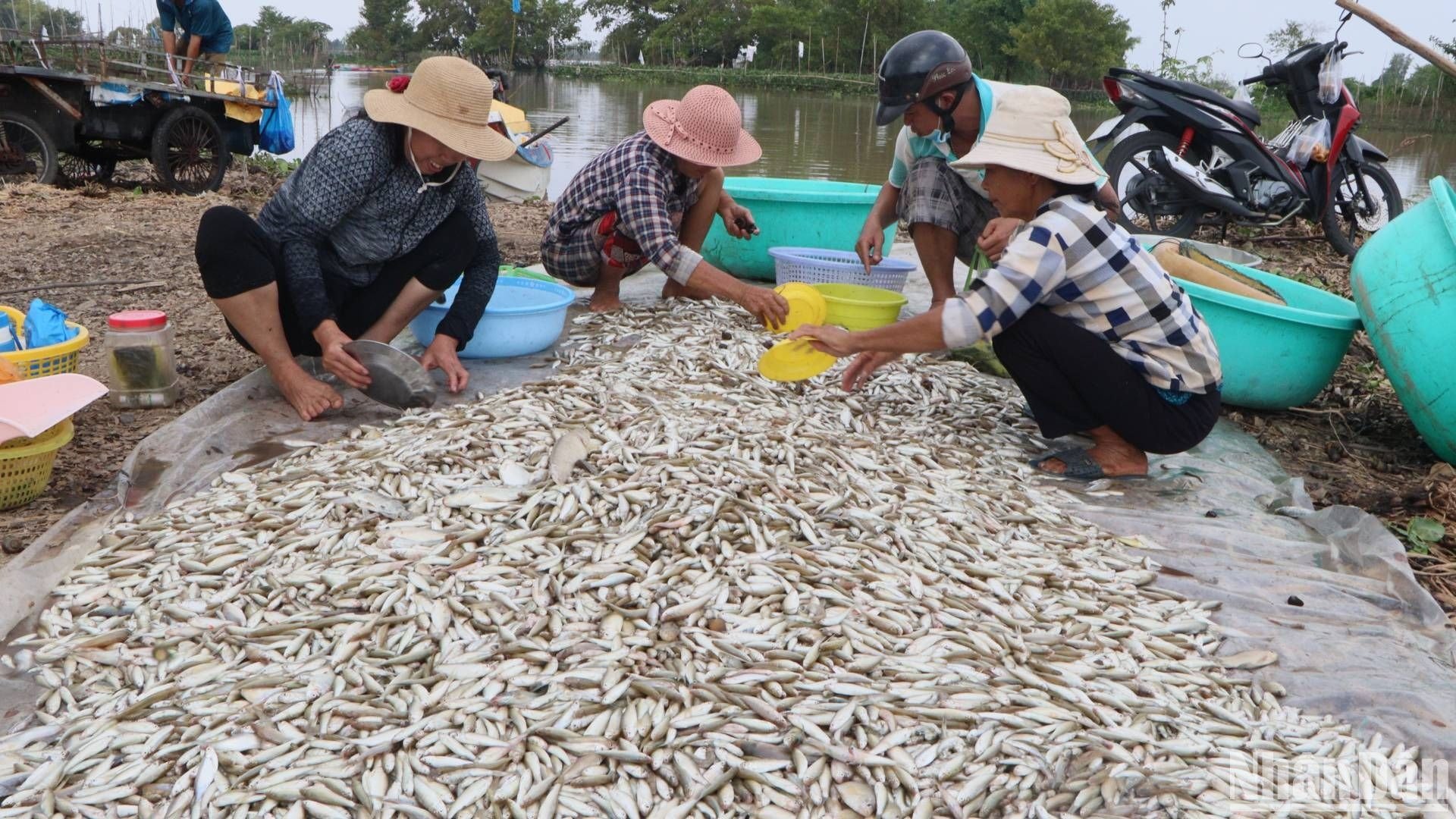
The fish migration season in the river provides many people in the upstream areas of An Giang province with a stable income through fishing, particularly catching a lot of snakehead fish and exploiting other products of the flood season.
In November, the floodwaters, also known as rising water, gradually recede from the rivers, bringing with them an abundance of shrimp and fish. Fishermen in An Giang province, living in upstream areas such as An Phu district, Tan Chau town, and Chau Doc city, focus on catching fish and shrimp...
Fishing season
This is the busiest time of the flood season, which fishermen call the "fish migration season." The most abundant fish are still the small carp. From the rice paddies, the fish swim and weave their way into larger rivers such as the Tien River, Hau River, Cai Vung River, and Chau Doc River, heading upstream towards the Mekong River.
An Giang province is located at the headwaters of the Tien and Hau rivers, so every year in July, water from the upper reaches of the Mekong River floods the fields, bringing with it silt, shrimp, and fish. By November, the water gradually recedes into the river. Fishermen use various fishing gear to catch fish; some stand along the banks casting nets, others set traps, some cast nets, and others fish with a rod and line.
In Long Thanh ward, Tan Chau town (An Giang province), locals and tourists are familiar with the sight of motorboats scooping up fish with nets on the Tien River, a method called "pulling and gathering." This is a rather unusual way of catching snakehead fish in the riverine area, found only in Tan Chau.
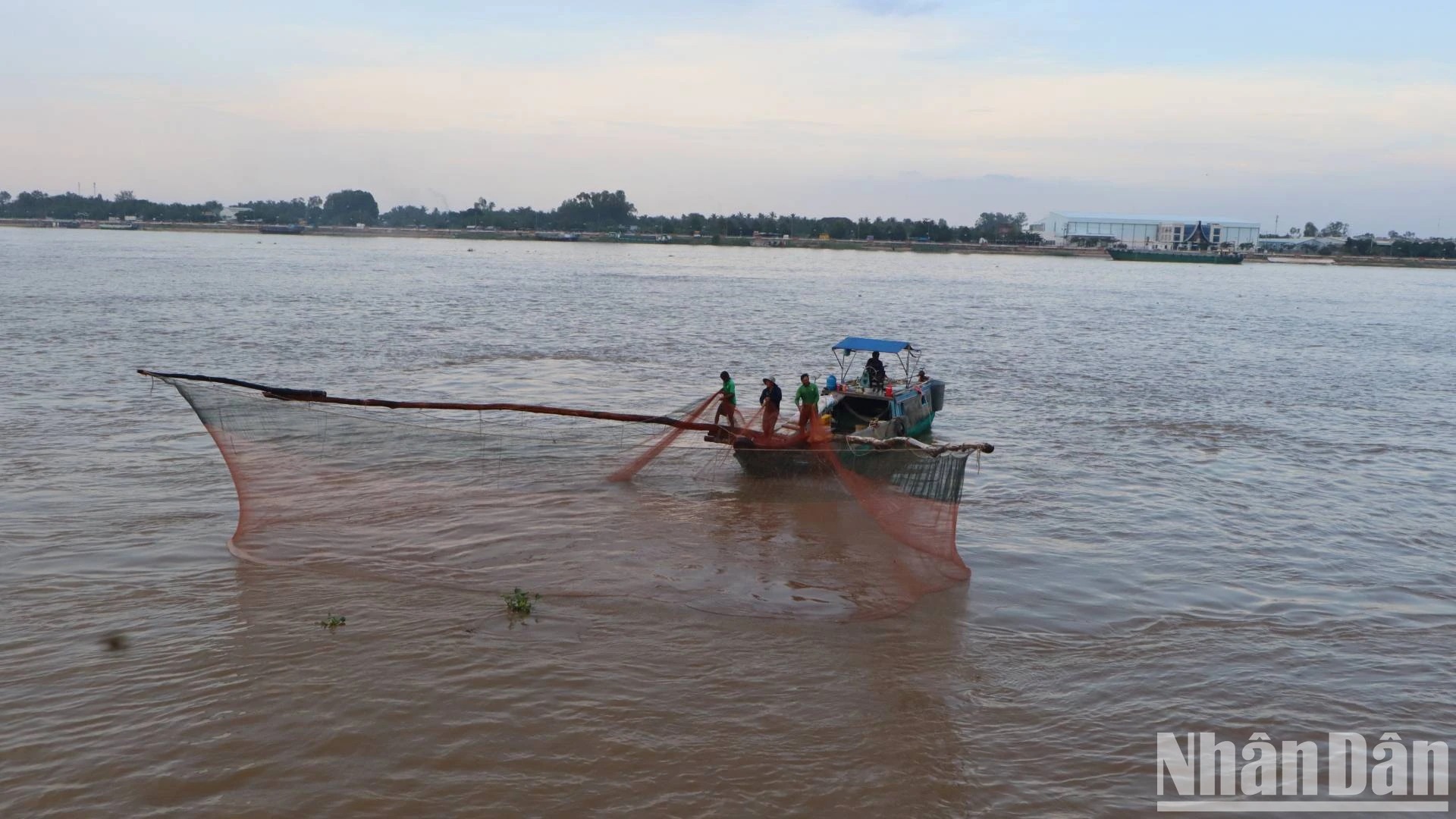
Trawling to catch linh fish—a local delicacy—on the Tien River in Tan Chau town, An Giang province.
Motorized trawlers cruising back and forth along the riverbanks during the fishing season have become a familiar sight to the city dwellers in this riverside area. Many people, in their free time, often go to the embankment to watch the trawling.
Mr. Cùm Văn Xuyên, the owner of a motorboat used for trawling, said that he has been making a living from this profession for over 20 years. The trawling season for catching snakehead fish lasts from October to November, then stops. The snakehead fish caught in the trawls are already large enough to be used for making fish sauce.
According to Mr. Xuyen, pulling the nets relies on machinery, so it's not very tiring, but it's important to know at what depth to cast the nets to hit the schools of fish.
Mr. Xuyen explained that the net has a width of 15m, but it is usually lowered to a depth of 10m. If it is shallower or deeper, it will still catch fish, but very few, sometimes none at all.
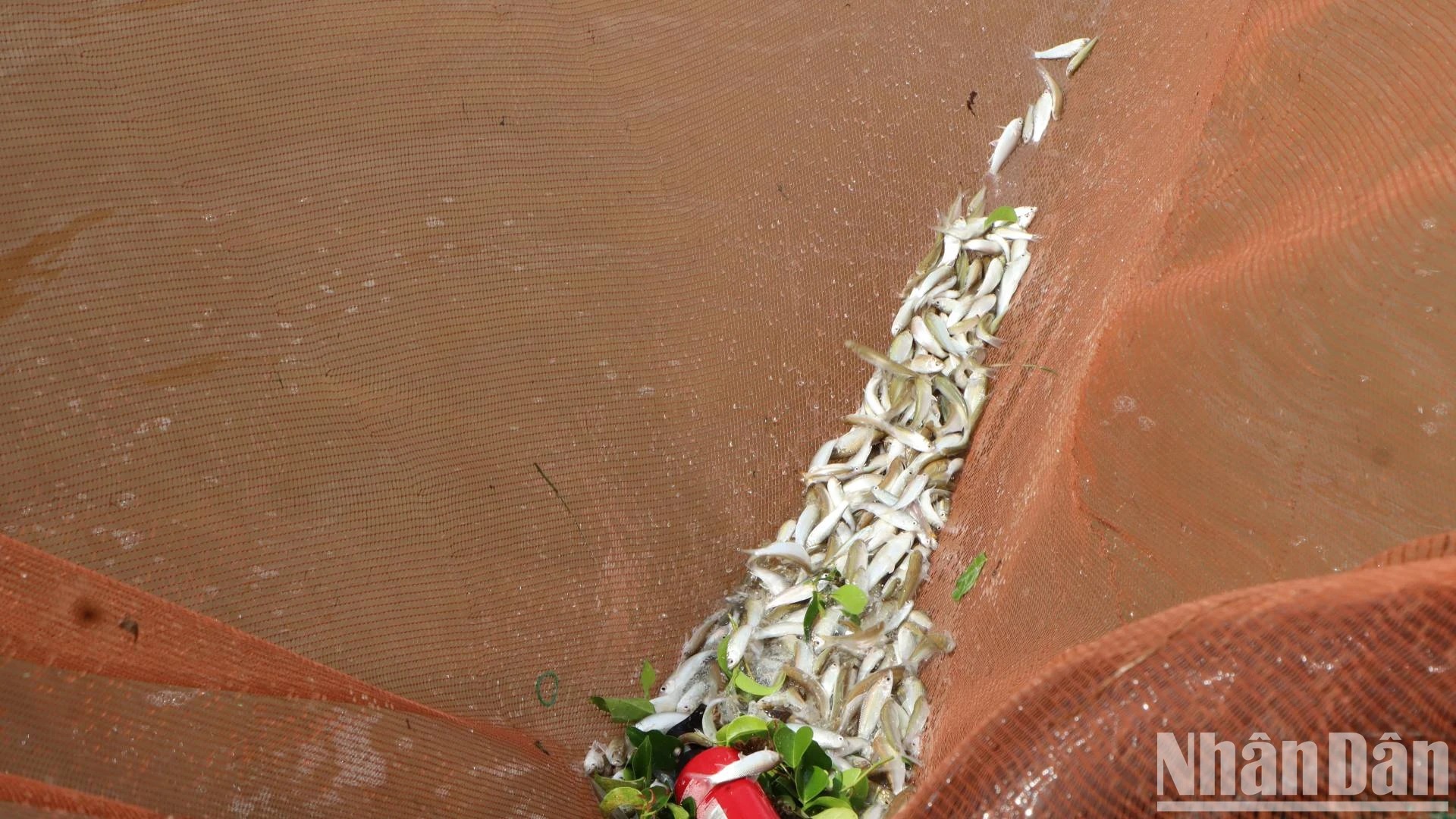
One day, fishermen in the upstream area of An Giang province caught hundreds of kilograms of snakehead fish.
We boarded a motorboat to watch Mr. Xuyen fish. There were four people on board. Mr. Xuyen was the "chief engineer," steering the boat and observing the water currents to judge the depth before casting the nets. The other three were responsible for casting, pulling, and scooping up the fish caught in the nets.
The process of casting and pulling the net takes about 15 minutes. During the first cast, as he slowly pulled the net up, the fish inside jumped and thrashed about. Looking at the school of fish, Mr. Xuyen's eyes lit up, and he happily said, "This net has a lot of fish, about 9kg. That's pretty good, because usually each net catches 3 or 4kg of fish."
They could tell how many fish they'd caught just by watching them jump in the net. Everyone was happy because there were so many. Mr. Nguyen Van Thang used a large net to scoop up the fish. Of the fish caught, over 90% were small carp, the rest were catfish, tilapia, and other species. Mr. Thang quickly emptied the fish into a large container holding 10kg of fish.
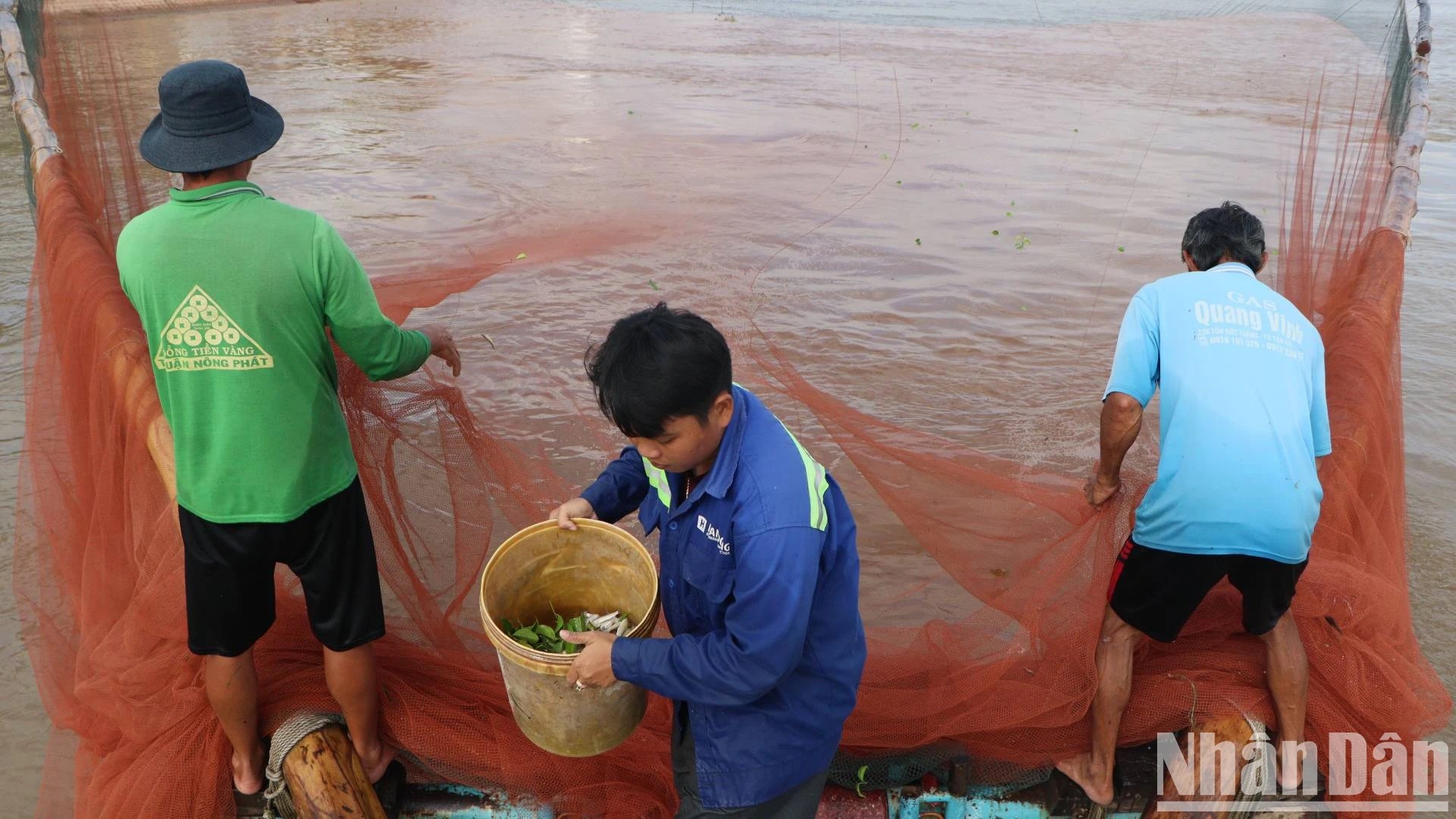
This plastic container can hold 10 kg of anchovies.
After collecting 5 crates of fish, Thang's group docked ashore, handed the crates to their customers, and then continued fishing for small fish with the current. On such a day, Thang's group fished for more than 8 hours.
Mr. Thang said that he works for a living, and his wages are paid daily depending on the amount of fish caught. When there are few fish, he gets paid 300,000 VND/day, while when there are many fish, it's 500,000 VND/day or more.
When the nets are still wet, there's money to be made. The job of hauling in the nets is different from regular net fishing because it can only be done for two months when the fish grow large and come out into the river. A single fishing season can bring in tens of millions of dong, which is spent frugally, saving for Tet (Lunar New Year) shopping and for the following months, because after the fishing season is over, the nets are packed up and other work is available.
Mr. Nguyen Van Thang
Xuyen estimates that he catches over 200kg of fish a day, depending on the tide and whether there are many or few fish in the river. Besides delivering fresh fish to his customers, Xuyen also ships the fish to businesses that make fish sauce and other fish-based condiments.
Joy and sorrow of the rising water
Because there are so many fish in the river, many people stand along the banks of canals and ditches casting nets to catch them. Mr. Nguyen Van Ve, residing in Vinh Nguon ward, Chau Doc city, who fishes on the Vinh Te canal, said that every morning he brings his net to the canal bank to catch some fish.
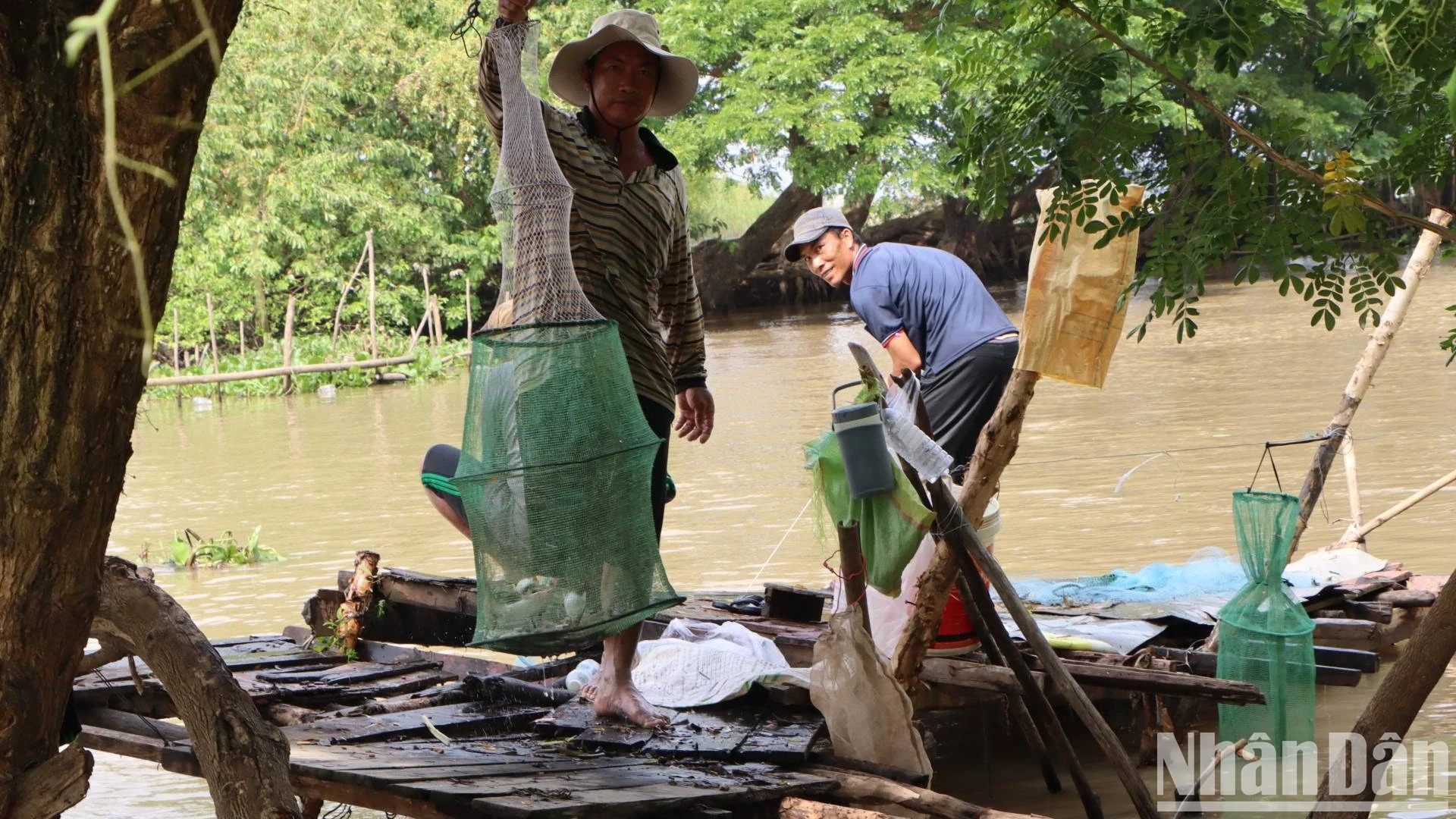
Many residents of Chau Doc city (An Giang province) gather to fish in the Vinh Te canal.
Mr. Ve only fishes in the mornings, catching various fish such as catfish, snakehead, freshwater dolphin, and carp... His family prepares these fish in various ways, including stews, fried dishes, and soups. The remaining fish are sold at the fish market or dried for later consumption.
The fishing season has helped hundreds of non-fishing professionals in Chau Doc, like Mr. Ve, avoid spending money on fish sauce for their meals. With plenty of fish, their daily meals are also tastier.
Walking along the Vinh Te canal, the scene of fishing and trading is bustling. Fisherman Tran Van Hai, residing in Vinh Te commune, Chau Doc city, said that at this time, he and four family members go out to set traps, and in one night they can catch several hundred kilograms of fish, mostly snakehead fish. After deducting expenses, they can earn more than 2 million dong in a night.
After catching the fish, Hai's group selects the larger, higher-priced fish to sell at the fish market, while the remaining smaller fish (such as anchovies) are weighed and sold to traders at prices ranging from a few thousand to 11,000 dong per kilogram. This month, fish wholesalers and traders are collecting fish to supply to fish sauce and fish farming facilities.
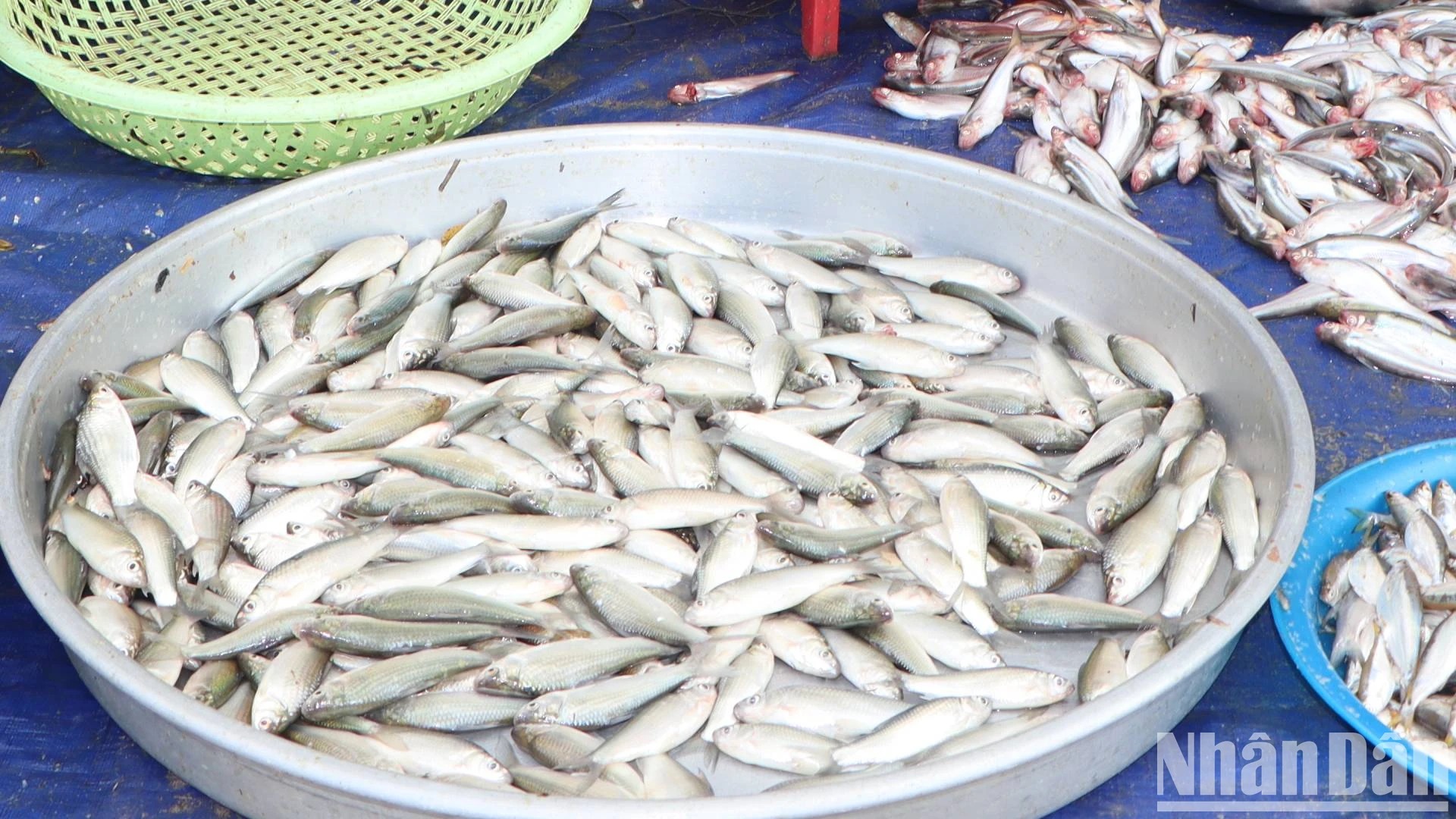
The snakehead fish are now large enough to be used in making fish sauce or sour soup, which is very delicious.
Mr. Hai shared that it has been four years since there was such a beautiful flood season, resulting in an abundance of shrimp and fish. For fishermen and people in the upstream areas, a beautiful flood season means the water rises gradually, reaching a level higher than alert level 1, and this year's flood has met these criteria.
But with the current tides, fishermen like Hai don't understand why the water is so unusual.
Normally, the water rises in August and gradually floods the fields. This year, the water arrived very late, not flooding the fields at all, so everyone was worried there wouldn't be a flood season. Then, unexpectedly, the water arrived in September, inundating the fields.
Mr. Tran Van Hai
Fishermen like Mr. Hai compare the unusual water levels to the fact that this year has experienced two flood seasons. The unusual water levels have also affected the fish population.
Pointing to the pile of small fish, Mr. Hai said, "Normally, the small fish are all the same size because they appear at the same time. But this year, the water level is unusual, so the fish are also different in size. Some are as big as a thumb, while others are as small as a middle or little finger. This is very rare in other small fish fishing seasons."
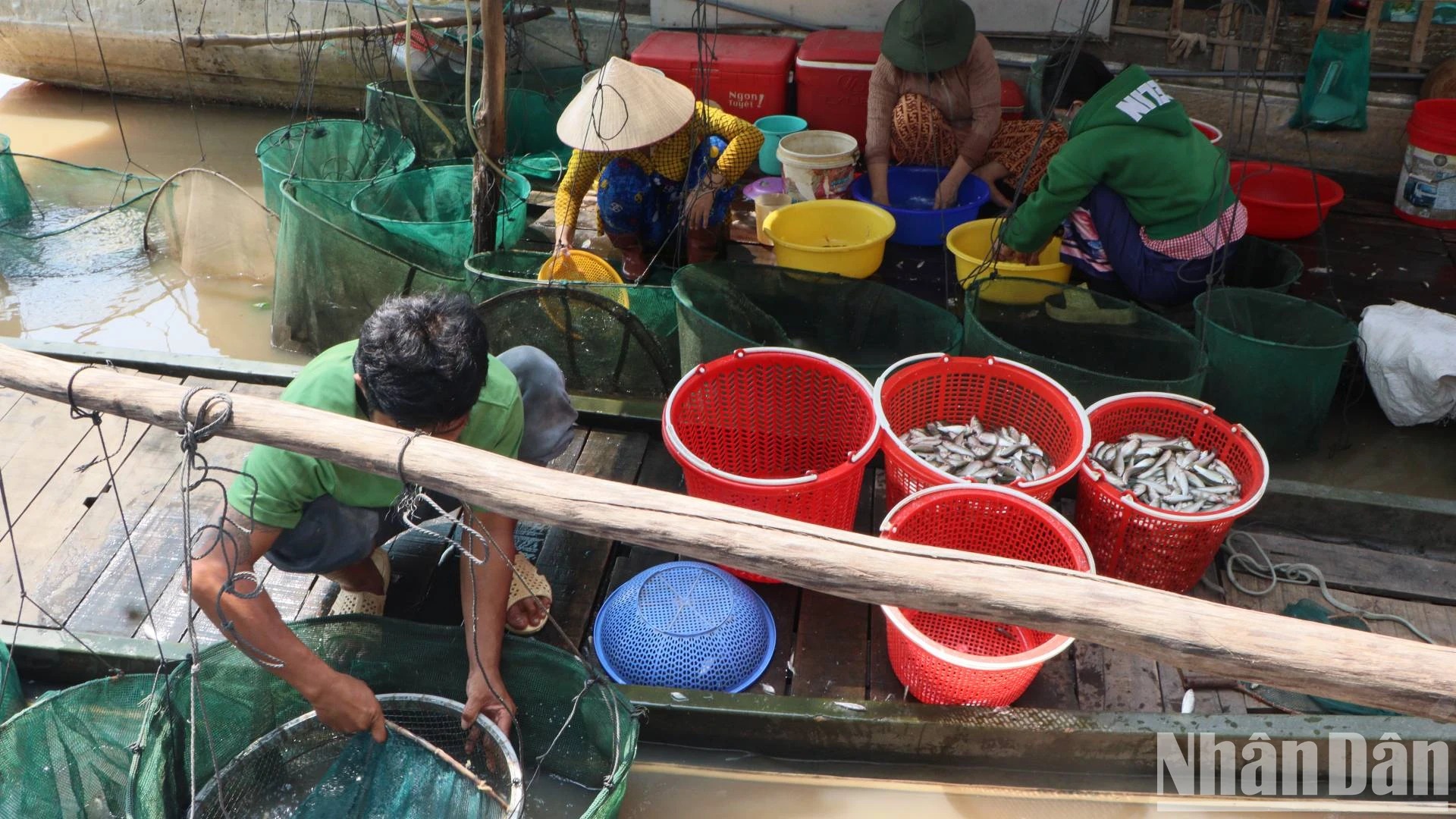
The season for catching snakehead fish provides a decent income for many people in An Giang province.
Mr. Hai speculated that the unusually large size of the snakehead fish was due to the low water level during the August flood, which attracted the fish to the area to lay eggs. Then, in September, the water level rose rapidly and became higher, causing the fish to return again.
Because there are two distinct flood seasons, the fish migrate in a chaotic manner, with some breeding earlier and others later, resulting in variations in the size of the young fish. Having made a living fishing during the flood season for over several decades, fishermen like Mr. Hai have never seen a flood like this year.
In previous years, the flood season, whether low, medium, or high, always followed a regular cycle in July. Previously, the old saying was "three years of small floods followed by one year of large floods," but since 2008, this experience can no longer be relied upon.
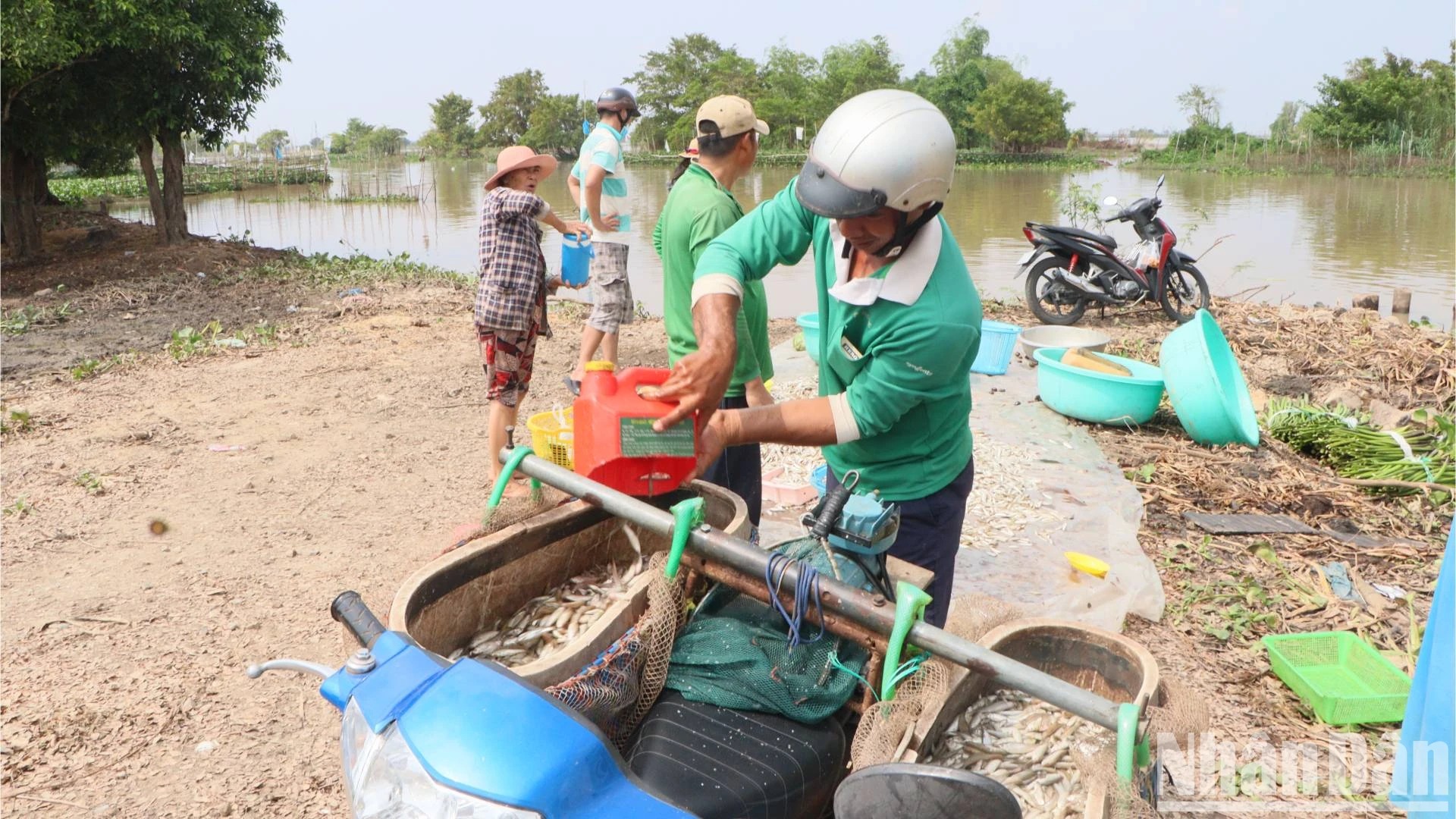
Linh fish are purchased by seafood processing facilities in An Giang during the flood season to make fish sauce or fermented fish paste.
This fishing season, Mr. Hai is happy because there are plenty of fish, but this is accompanied by worry because this year's floods are quite unusual compared to those familiar with the riverine areas like him. He worries about facing unpredictable flood seasons.
The flood season is a familiar friend of farmers; in the past, they relied on nature to predict which years would have high and which would have low water levels, but now, no one knows for sure, because the water levels are unpredictable.
And so, every time the flood season begins, thousands of people who depend on the water for their livelihood are filled with anxiety, wondering what the fishing season will be like?...
Source: https://danviet.vn/bat-la-liet-ca-linh-ca-dong-tom-song-mua-nuoc-noi-an-giang-sao-van-lo-con-nuoc-bat-thuong-20241121104251784.htm


![[Photo] Prime Minister Pham Minh Chinh holds a phone call with the CEO of Russia's Rosatom Corporation.](/_next/image?url=https%3A%2F%2Fvphoto.vietnam.vn%2Fthumb%2F1200x675%2Fvietnam%2Fresource%2FIMAGE%2F2025%2F12%2F11%2F1765464552365_dsc-5295-jpg.webp&w=3840&q=75)





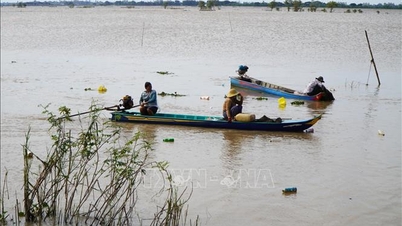

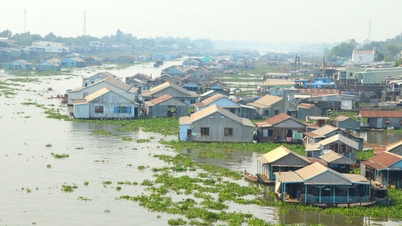

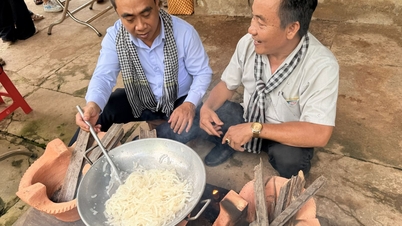



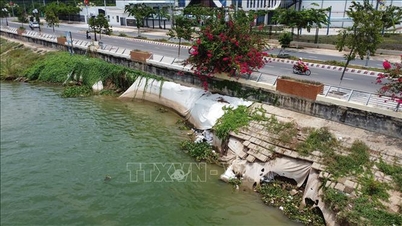
![Passion fruit 'capital' faces sustainability challenge: [Part 3] Building supply chain linkages](https://vphoto.vietnam.vn/thumb/402x226/vietnam/resource/IMAGE/2025/12/12/1765517075835_1232-akk00534-130606_948.jpeg)



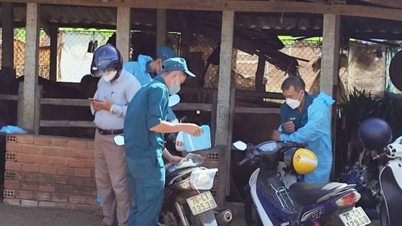









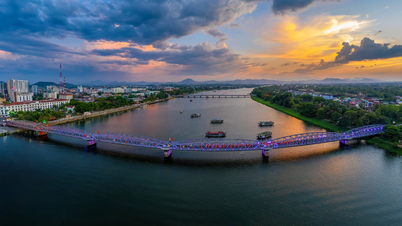






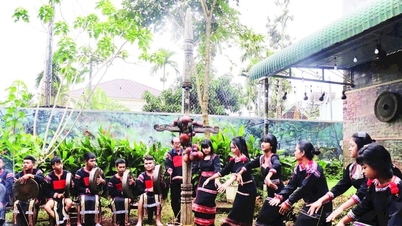




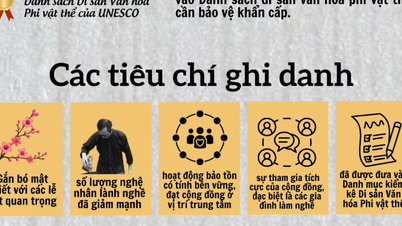





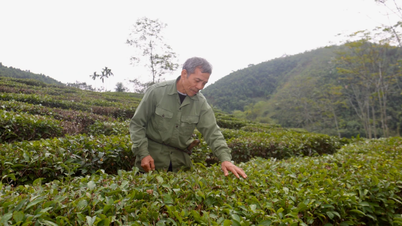






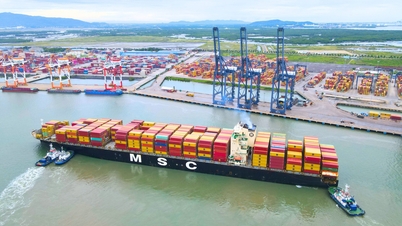






































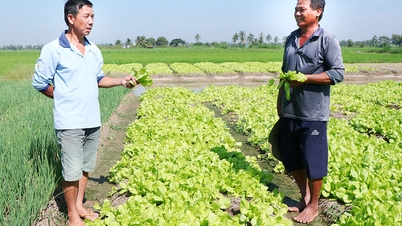

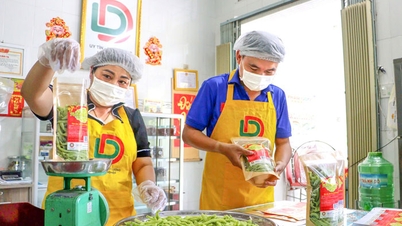











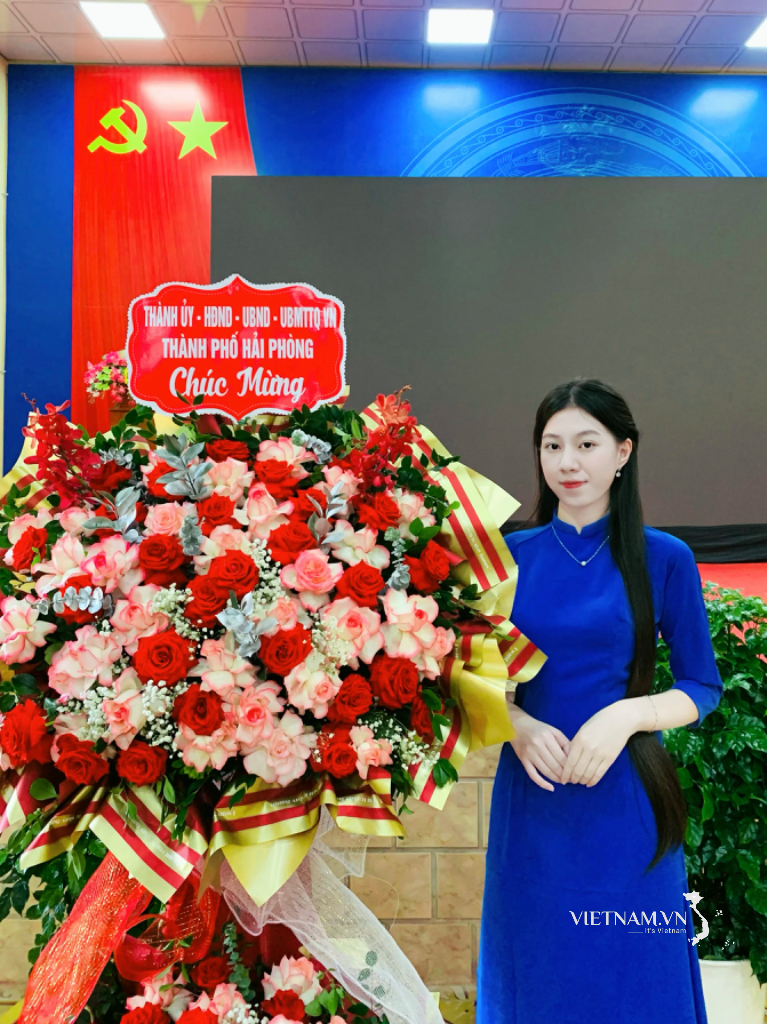


Comment (0)